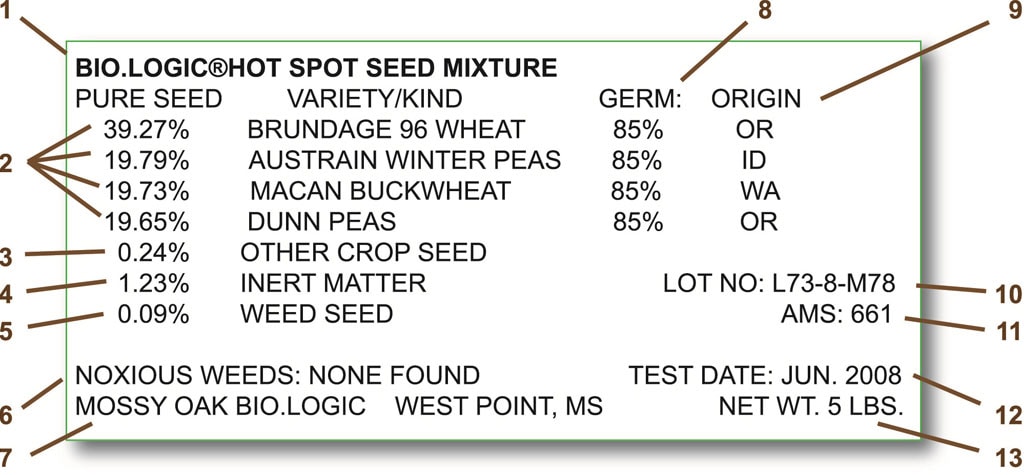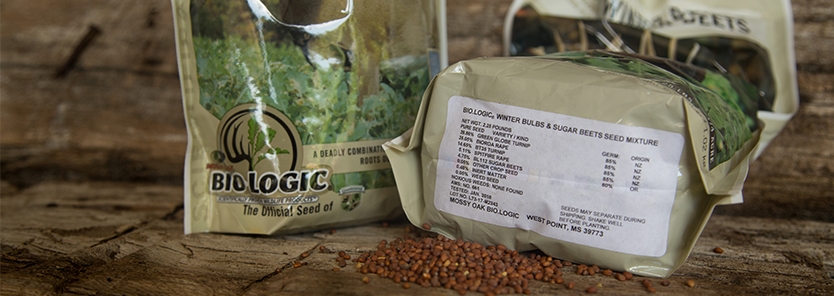Buying your food plot seed can sometimes be a little confusing, given all the choices that are on the market today. Each year the team at Biologic gets hundreds of phone calls asking about the seed analysis for the blends they are buying. Often people want to know if they are really buying good seed or are they buying less than perfect seed. At Biologic we put a lot of thought, time, and effort into each blend to make sure the end consumer is getting the best bag of seed for the money they are spending. Before buying a bag of seed be sure to look for the food plot seed label on the bag. The label will tell the consumer everything about the components inside the bag, so they will know exactly what they are buying. We get a lot of questions about the seed label and want to try to explain all aspects of the label. There are numerous items on the seed label, but one item you will really want to pay attention to. Always look for the Test Date on the label. Most states require seed to be retested at least every 12 months, while some states require it to be retested every 9 months. Be sure to look for the Test Date and make sure the seed has a current germ. If the Test Date is over 12 months make sure to call the seed company and ask for a current germ on the specified lot # before purchase. Taking this step will assure a good conscience about your seed purchase. If there are other questions about your seed purchase, be sure to contact your local farm store or contact Biologic at plantbiologic.com or 662-495-9292 for a further analysis.


- Name of variety, blend or mixture.
- Pure Seed: The percentage by weight of each of the components.
- Other Crop Seed: The percentage by weight of other seeds that are not considered weeds. If this number is higher than 5%, the species must be listed on the tag.
- Inert Matter: The percentage by weight of material that will not grow, such as broken seed, chaff, empty florets, coating material, etc.
- Weed Seed: Percentage by weight of seeds not considered pure.
- Noxious weeds: The percentage by weight of seeds that are considered noxious weeds as defined by each state(s) where the seed will be sold.
- Company Name/Address: The name and address of the company providing the seed.
- Germ: The percentage of pure seed that will germinate in a controlled lab.
- Origin: The state or country in which the seed was produced.
- Lot Number: Each lot of seed has a unique identification number used for tracking.
- AMS: The shipper of the seed is identified by a unique number from the USDA Marketing Service.
- Test Date: The specific month and year that the seed was tested for germination.
- Net Weight: The total weight of the seed in the package or bag.







